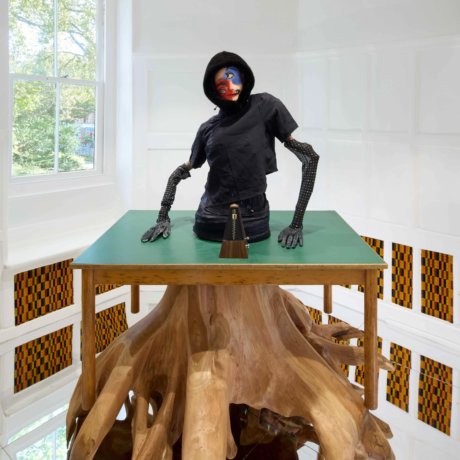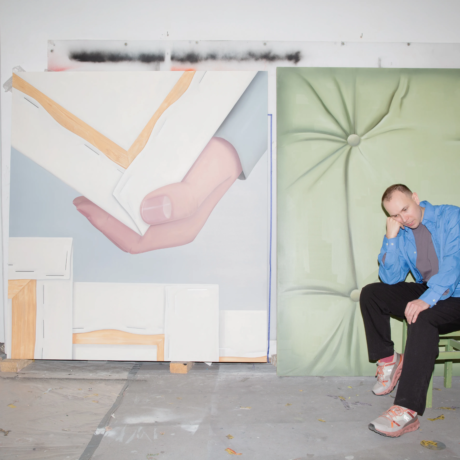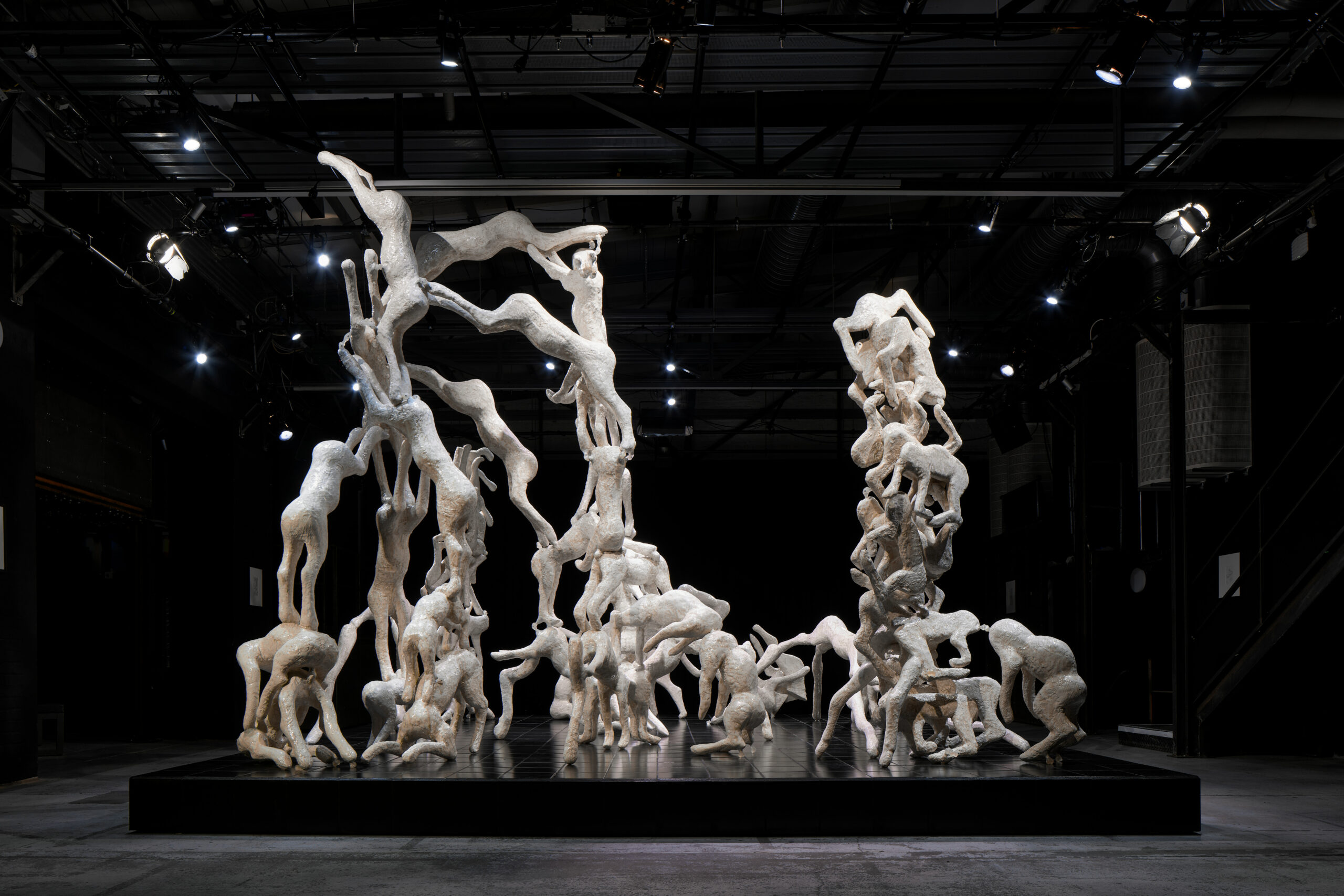
Sally von Rosen jokes that she is “a bit like a bad archaeologist”. She’s explaining how she sculpted ‘Twin I’ (2023) and ‘Twin II’ (2023) – two headless creatures with globular bodies, bony limbs, and claws, which appeared to crawl up the walls of Berlin’s Wentrup II gallery as part of her latest solo show, AT ODDS. The Swedish artist created these foetal forms in a plaster mould, casting them with fibreglass and translucent resin before “violently” wrenching them out. “It felt like they were fossils or something,” she says. “You’re supposed to use a small brush and knives to extract them, but I was literally trying to hammer them out.”
Archaeology might feel like a funny field of reference for an artist as contemporary as von Rosen, whose abstract sculptures have crept and climbed through the most experimental of Berlin’s art spaces over the past few years. Equally renowned for her performances, her participation in Anna Uddenberg’s laser-sharp critique of consumerist culture, Continental Breakfast, at Meredith Rosen Gallery in New York last spring became a viral sensation.
Uddenberg, who reached art world and Internet notoriety with her sculptures of hyper-sexualised, hyper-extended faceless female dummies, prompted von Rosen’s move to Berlin in 2019, and has been her mentor and friend ever since.
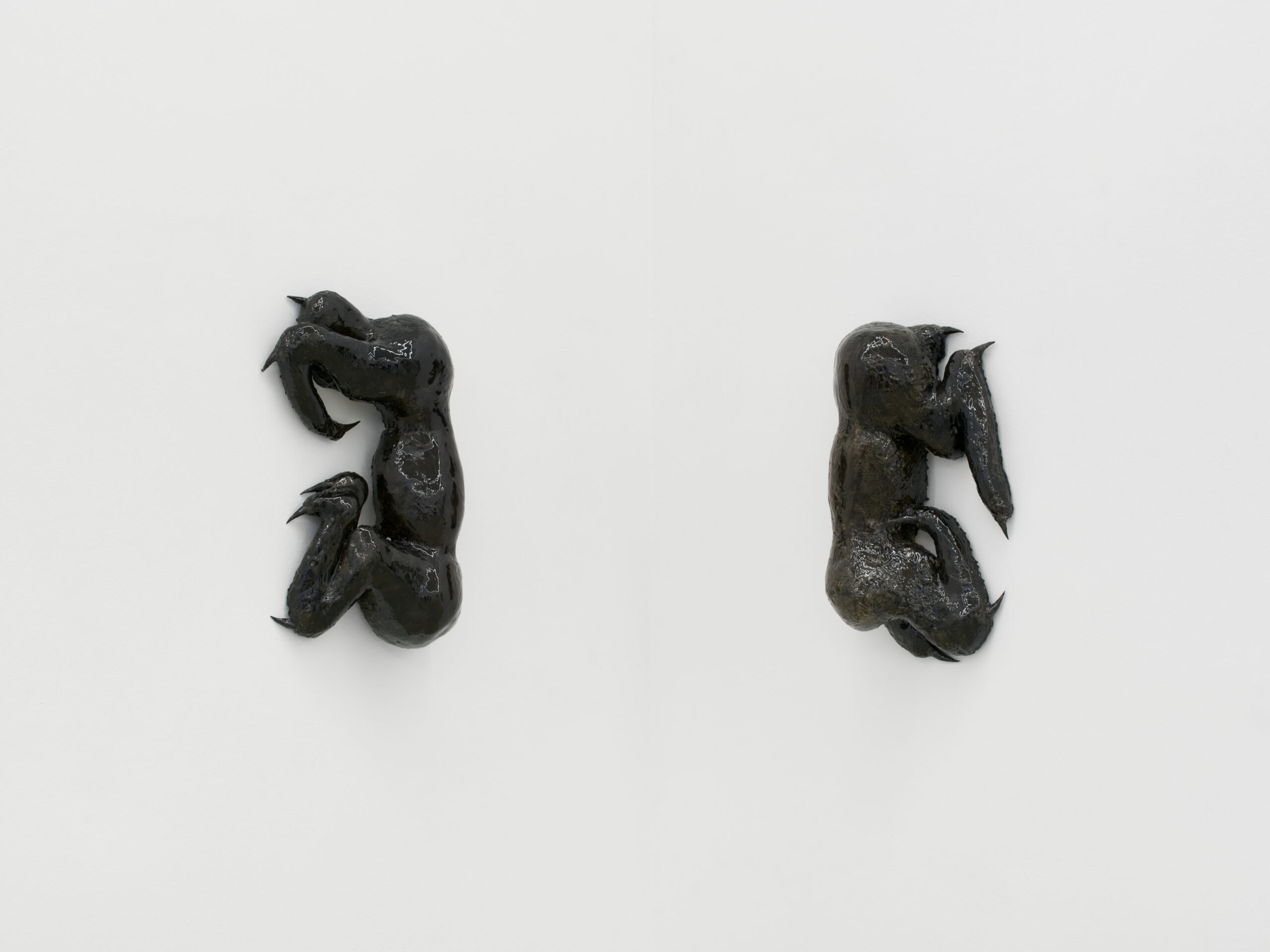
But von Rosen’s imagination reaches as far into the past as it does into the future, and themes of excavation are deep-rooted in her practice. Her hybrid creatures seem at once like a lost species – dug out from some dark primordial depths of the earth – and an entirely novel one, beamed down from an intergalactic realm. Taken together, the scope of her work can be seen as an evolution of that species, from the reptilian eggs she began sculpting in 2021 to svelte, long-legged creations like ‘Reh’ (2023) and ‘Mrs. Sphere’ (2023), who prowl gracefully on stiletto-sharp fangs. New stories are built upon old, futuristic upon familiar, alien upon ancient.
“It all feels so double. I love it when art can stretch between two things that we feel are so far apart from each other,” von Rosen says, speaking from her studio in Mitte. Doubleness is a dynamic element of her production process too, which begins with a constant stream of images so hard to get rid of she struggles to sleep. When it comes to translating those images onto her materials (aluminium and bronze are her latest interests), she describes a push-pull between control and release.

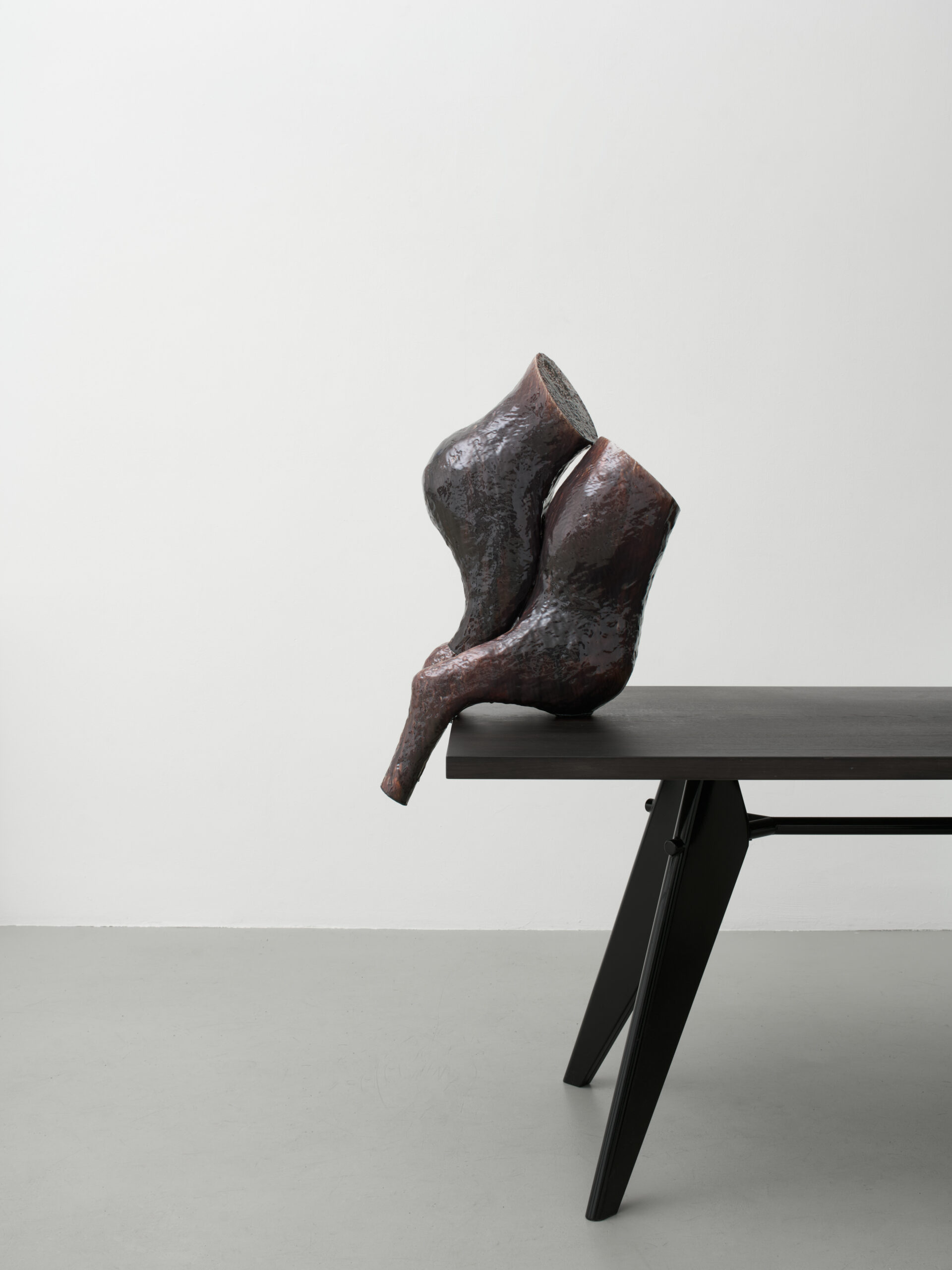
“You have to be so intuitive with the material, really feel it and let your body go and just create,” she explains. “But at the same time, it’s heavy work, so you need to be physically fit and disciplined to be able to wrestle with it.” So much so, that she emerged from an intense period of hand-carving last summer with her right bicep noticeably bigger than her left (an imbalance she sought to rectify at the gym).
Von Rosen’s process is such an intimate one that she affectionately refers to her creations as her “newborns”, sleeping alongside them in the studio, staring at them for hours as she brings them into being. But while her sculptures are all about the visceral – “you’re supposed to feel first, think later” – they’re informed by layers of literature and academic theory stemming from her background in philosophy. “During my bachelor’s studies in Gothenburg, my hometown, I specialised in aesthetics: How do you feel when you look at art? But the problem with philosophy is that all the rules are already made up, mostly by dead men, and if you don’t follow their rules then you’re out,” she says. “I realised that if I was ever going to understand art, I needed to make it myself. I needed to create my own system, my own worlds, and not get stuck within theirs.”
Still, philosophy remains an important bedrock, particularly the thinking of contemporary American theorist Jane Bennett. In Vibrant Matter: A Political Ecology of Things (2009), Bennett puts forward the idea of a vital materialism that extends beyond nonhuman animals and plants. She argues that even inorganic matter, such as litter or minerals, exhibit “powers of life, resistance, and even a kind of will”.
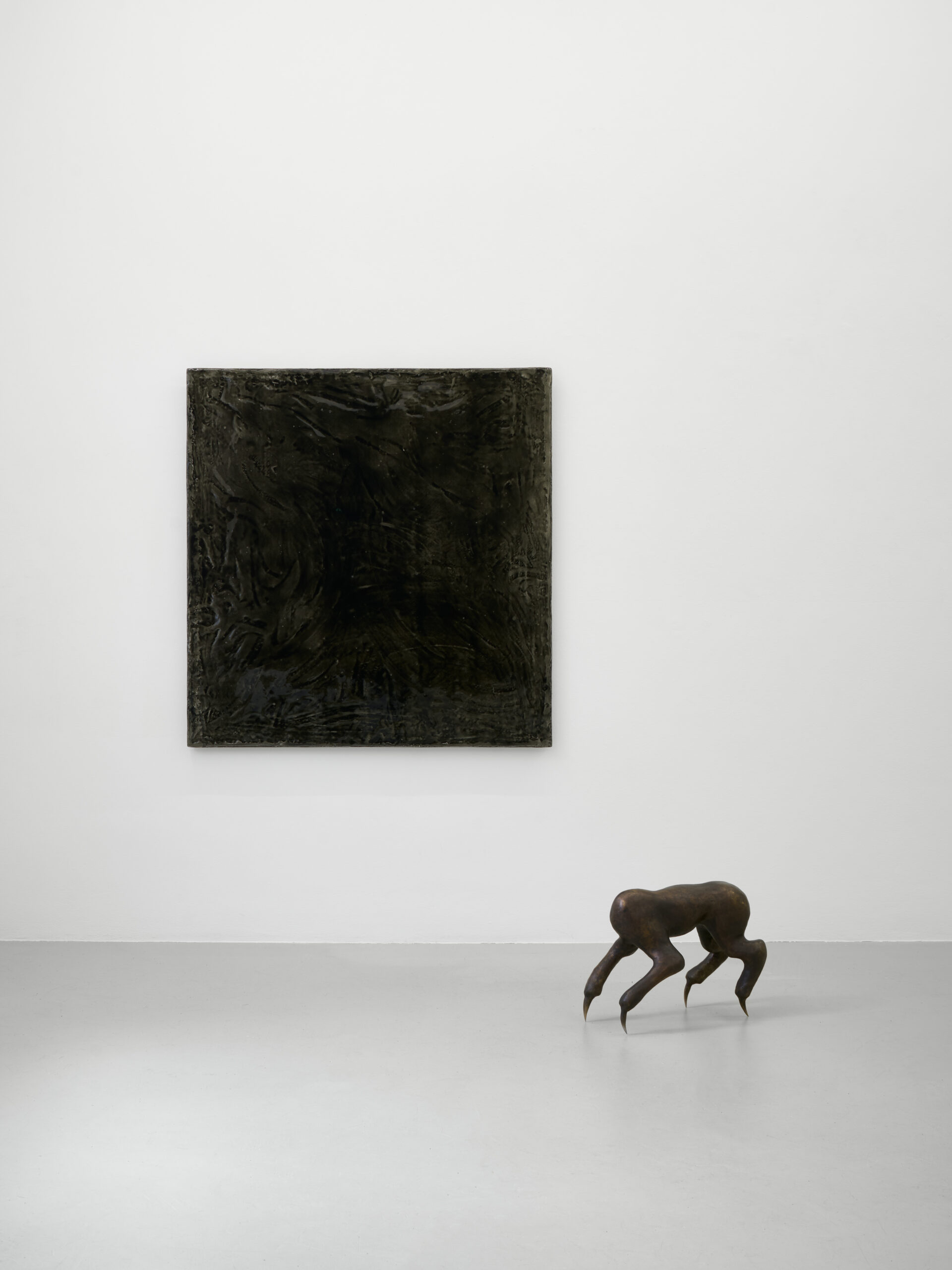
Peered at through this lens, von Rosen’s sculptures emphasise the power that objects can exert on people and their social interactions, blurring subject-object distinctions altogether. “A lot of what I find interesting is how I can transfer an emotion onto an object when I touch it, when I work with it, when I spend a lot of time with it, and then when I’m not there anymore, the object can give that emotion to someone else,” she reflects. “And I’m like, if an object can do that, it can’t be that dead. Sometimes I feel like my creatures are so alive.”
She recalls a moment at a show last year when someone came up to her and tried to explain how they felt about her sculptures. “They said, ‘Oh, it’s kind of scary, and I kind of want to run away from it, but I also really want to take care of it’. And then you have those two emotions, these conflicting things – how you can feel fear and protectiveness towards an object at the same time.”
Her most recent body of work, AT ODDS, is also deserving of that reaction. Several of her sculptures appear in pairs or having been split in two, drawing on the ideas of one of the deadest male philosophers of all time: Plato. In the Symposium, Plato proposes a myth about the origins of human love, suggesting that humans were originally spherical beings with two faces, four arms, and four legs. These beings were powerful and attempted to challenge the gods, so in response, Zeus split them in half, separating each person into two distinct entities. From then on, these separated halves were condemned to wander through life in search of the other in order to feel whole again.
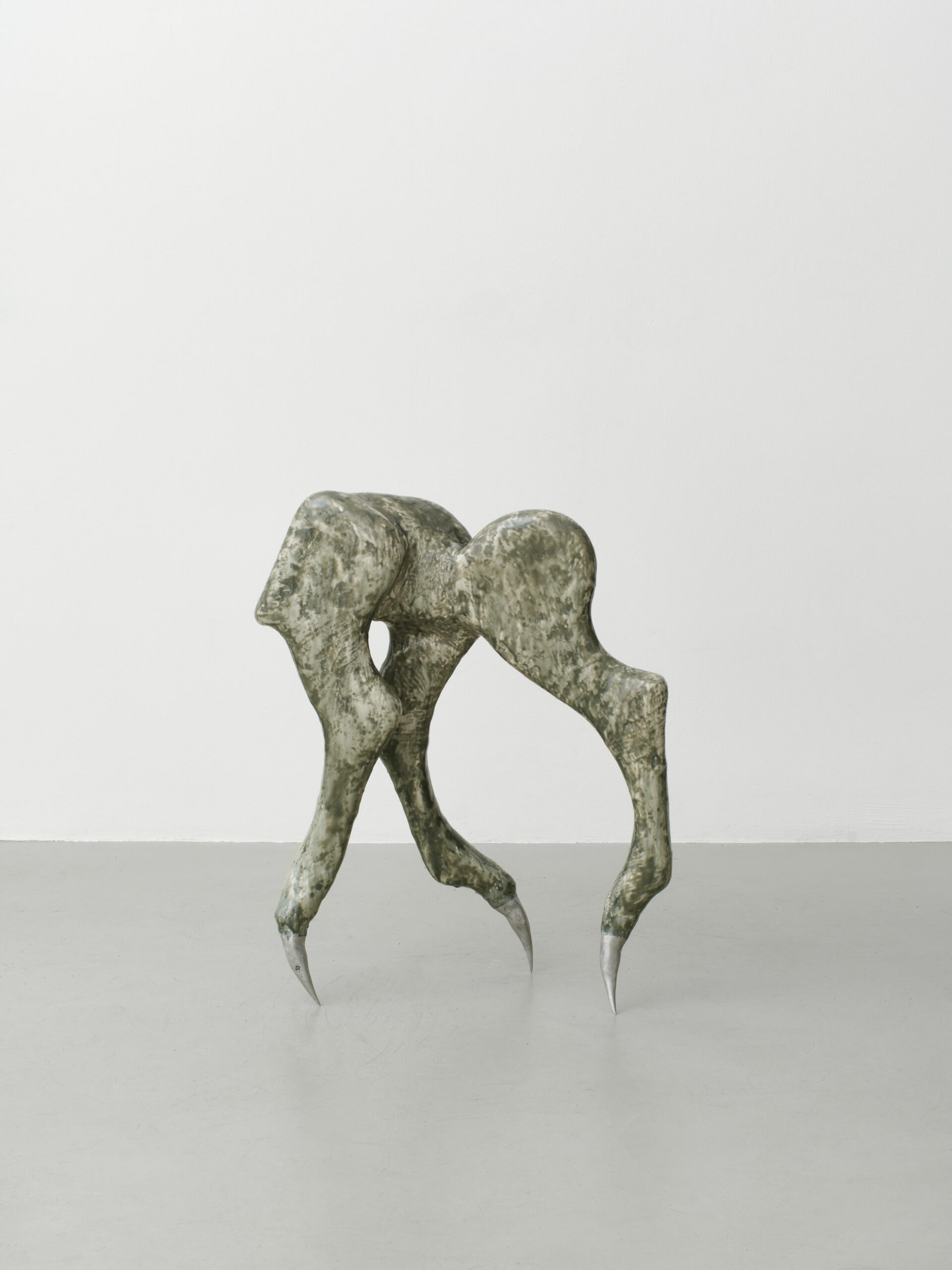
Von Rosen’s ‘Split’ sculptures conjure this myth with emotional immediacy. They look like butchered limbs locked in a warped embrace – straddling one another on a table with an almost erotic intensity or trying to fit together like puzzle pieces on the floor. Despite bearing the texture of raw meat, there’s a romantic pathos to these figures, as though they’ve crawled through the white cube space in desperate search of one another and are attempting to merge again. Sealed shut by epoxy, their hardened surfaces prevent them from doing so. The scene feels both parodic and poignant, a satire of the soulmate ideal that has persisted to the present day.
Von Rosen welcomes this collision of romance and brutality. “The way those sculptures came about, it was also like a brutal act. I created them as one body and then sawed them in half by hand, so it’s like they still belong to one another, but they’re totally split,” she says. “And when you think about soulmates and human relations today, it resonates. They embody a human desire to find someone in life. For a sculpture to do that, it’s scary and beautiful at the same time.”
AT ODDS plays with the human urge for connection and wholeness and also toys with essential questions of origin. Lining the walls of the exhibition are four dark panels coated with epoxy and different types of resin. The tactile quality of their surface is strongly reminiscent of the “skin” of the sculptures surrounding them, rendering them a portal or point of origin for von Rosen’s creatures and also an unlikely reflection of the artist herself. “I realised that with all of these creatures, I’m trying to find out where they come from, but they also come from me – so maybe these wall pieces are a self-portrait in some weird way,” she muses.
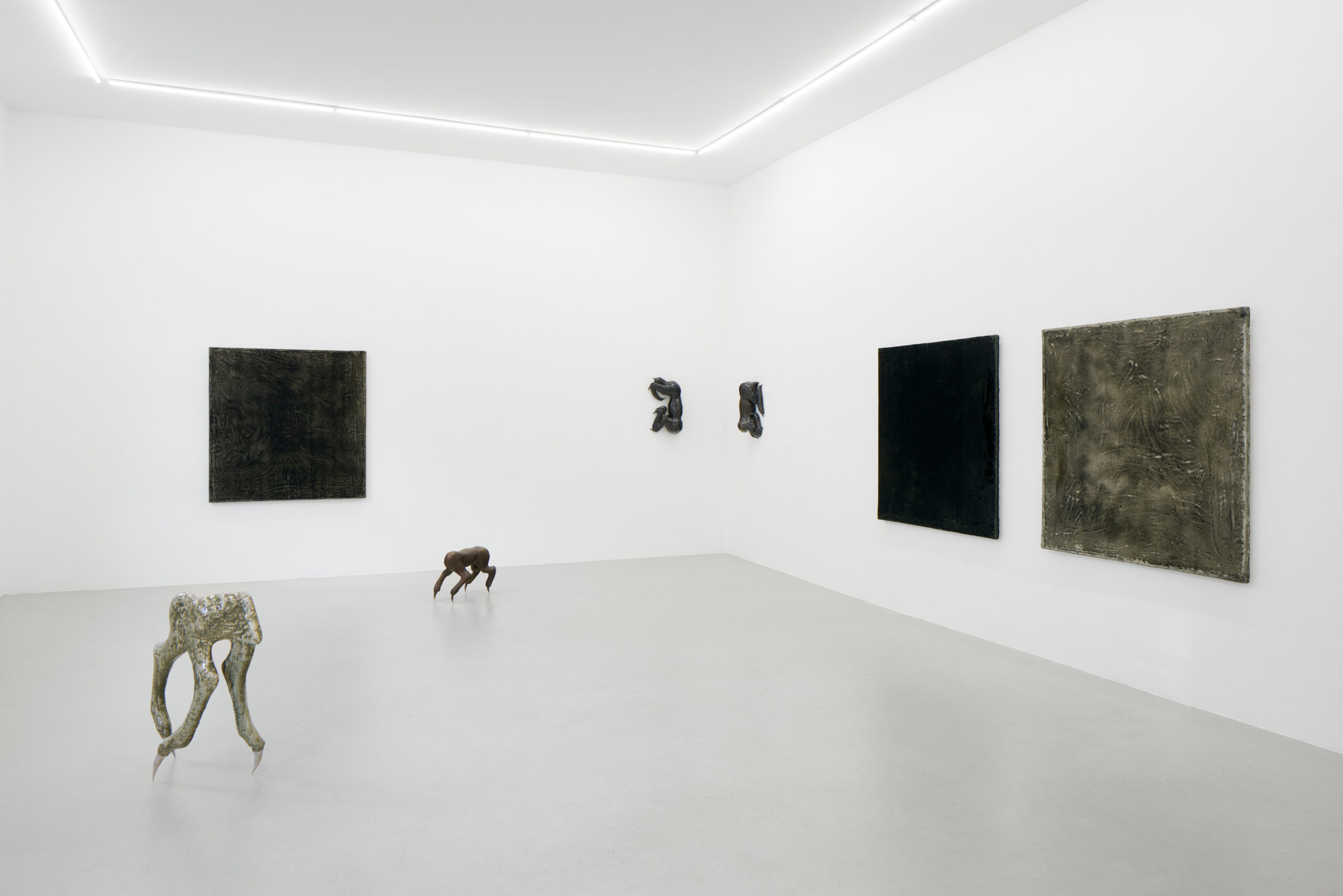
The dark panels are also a stepping stone between AT ODDS and von Rosen’s previous installation, MAIN BODY, which exhibited at Berlin’s TRAUMA BAR UND KINO last autumn. Her biggest solo show yet consisted of a towering skeletal sculpture mounted on a square black stage. Balanced on top of one another, intertwined as a herd, 57 headless bodies rose from that black panel, clambering towards the light.
Viewing these two shows in sequence, it becomes apparent that themes of splitting extend beyond Platonic reference points and individual sculptures in AT ODDS, to the progression of von Rosen’s practice as a whole. “In MAIN BODY, my creatures became this flock of bodies for the first time, created individually, then linked through this shared structure. They entered this massive existence, so then came the question of what next?” von Rosen explains. “What’s their next step? Grow them even bigger? In another formation? That’s possible, of course, and will probably happen at some point, but to go further, I felt I had to break it all down. AT ODDS was this moment of radical cut.”
Von Rosen’s self-awareness is striking. She’s an artist who goes deep and deeper still and then surfaces for air to consider each claw of each limb of each creature of each collection within a broader history of her own making. Her ability to sculpt and sustain a narrative over months and years while keeping it sharp with radical departures like this one is what makes following her career so rewarding.
Written by Madeleine Pollard

